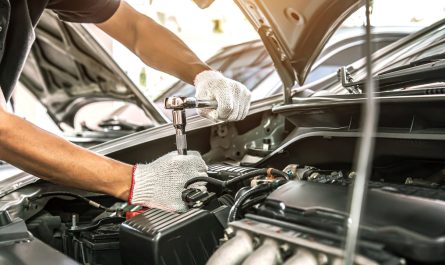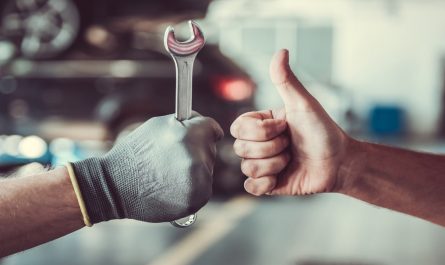The Importance of Regular Car Maintenance
Regular car maintenance ensures that your vehicle operates efficiently and safely. By adhering to a structured maintenance schedule, you contribute to the longevity of your car. Every vehicle requires specific check-ups and services, critical in preventing minor issues from escalating into significant problems. Neglecting maintenance can lead to various complications, including increased repair costs, reduced safety, and even accidents on the road.
A well-maintained car runs better and provides a safer driving experience. Regular brakes, tires, and essential system inspections help identify potential safety concerns before they result in hazardous situations. Moreover, ignoring these regular checks can result in inconsistent performance and diminished reliability, raising your risk on the road. Understanding that car maintenance is not merely an expense but an investment can help prioritize these necessary tasks.
In addition to safety, regular maintenance can dramatically improve your vehicle’s fuel efficiency. Components such as air filters, oil, and tires significantly influence your car’s fuel efficiency. A vehicle that receives routine maintenance will likely experience improved fuel economy, ultimately saving you money in the long run. Furthermore, adherence to regular service intervals enhances the car’s resale value. Prospective buyers are more inclined to purchase a vehicle with verified maintenance records, which signals reliability and care.
In summary, the importance of regular car maintenance cannot be overstated. By committing to scheduled inspections and servicing, owners can ensure their vehicles are safe, efficient, and capable of providing reliable performance throughout their lifespan. Taking proactive measures in maintaining your car can lead to lower overall ownership costs and a better driving experience.
Monthly Maintenance Checklist
Maintaining your vehicle every month is crucial for ensuring its longevity and performance. One of the first tasks to address is checking the fluid levels, which includes essential liquids such as oil, coolant, and brake fluid. To check oil levels, locate the dipstick, remove it, and wipe it clean. Reinsert it to obtain a precise reading. If the oil level is below the recommended range, it should be topped up with the appropriate type of motor oil. Similarly, checking coolant involves inspecting the reservoir and ensuring it is filled to the proper level, particularly if the engine has been running cool.
Next, inspecting tire pressure and tread depth should be a regular part of your car care routine. A reliable tire gauge should be used to assess the tire pressure; it should meet the manufacturer’s specifications, typically found on a label inside the driver’s side door. Maintaining proper tire pressure promotes fuel efficiency and maximizes tire life. Likewise, checking tread depth ensures optimal traction. The penny test is simple: insert a penny into the tread; if you can see Lincoln’s entire head, it’s time to replace the tires.
Periodically testing the battery condition is vital as it can prevent unexpected breakdowns. Look for corrosion on battery terminals and clean them if needed. To test the battery, use a multimeter to check voltage levels; anything below 12.4 volts indicates a required recharge or potential replacement. In addition to these tasks, examine brake functionality by inspecting the pads and discs for wear, ensuring safe stopping performance when driving.
Finally, regularly checking all your lights — including headlights, brake lights, and turn signals — is necessary for road safety. Failure to have functional lights can lead to accidents and legal issues. By following this comprehensive monthly maintenance checklist, car owners can proactively address potential problems and maintain their vehicles in optimal condition.
Yearly Maintenance Checklist
Regular maintenance is vital to the longevity and performance of your vehicle. While monthly checks can help with finer details, yearly maintenance ensures all aspects of the car remain in excellent condition. This comprehensive checklist includes critical tasks such as oil changes, brake inspections, coolant flushes, and timing belt replacements, which a professional should carry out. These procedures prevent potential issues and contribute to the vehicle’s overall efficiency.

One of the primary tasks on your yearly checklist is the oil change, an essential aspect of vehicle upkeep. Engine oil degrades over time, and changing it annually ensures optimal lubrication of engine components, reducing wear and tear. Additionally, brake inspections should occur each year. Brake pads, rotors, and fluid levels will be evaluated, ensuring the safety and performance of your braking system can be relied upon.
Another crucial yearly task is the coolant flush. Over time, coolant can break down, leading to reduced efficacy in temperature regulation. Flushing old coolant and replacing it with new liquid will help maintain proper cooling system function. Furthermore, timing belt replacements are critical, as a worn belt can cause significant engine damage. Consulting your vehicle’s manual for recommended service intervals is advisable, as timing can vary based on make and model.
Additionally, conducting a complete vehicle inspection each year is recommended. This service usually includes tires, lights, exhaust systems, and suspension component checks. A thorough evaluation identifies potential issues before they escalate, allowing you to budget effectively for repairs. To save on maintenance costs, consider scheduling these services to secure the best rates and grouping several tasks. Adhering to this yearly maintenance checklist ensures your car remains in optimal condition, promoting safety, performance, and longevity.
How to Maintain Your Car Like a Pro: A Monthly and Yearly Checklist
DIY vs. Professional Maintenance: What You Should Know
Regarding car maintenance, car owners often choose between performing tasks themselves or hiring a professional mechanic. Each approach comes with its own set of advantages and disadvantages. Understanding these can help you make informed decisions about maintaining your vehicle effectively.
DIY maintenance allows car owners to save money, as performing tasks like oil changes, air filter replacements, and tire rotations can significantly reduce costs associated with labor fees. Additionally, undertaking maintenance tasks can foster a better understanding of your vehicle, allowing you to learn valuable skills that enhance your confidence in handling minor repairs. DIY maintenance can be a gratifying experience for those with the necessary technical skills and tools.
However, maintenance tasks require specialized knowledge, experience, or tools that most car owners may not possess. Complex operations such as brake system repairs, transmission services, or engine diagnostics are best left to trained professionals. Attempting to perform these tasks without the requisite expertise or equipment can lead to costly mistakes and safety hazards. Furthermore, some tasks may also affect your vehicle’s warranty status, making it crucial to know which services can be performed independently.
Before deciding on a DIY or professional maintenance route, consider your capabilities, the tools at your disposal, and the complexity of the task. Routine checks such as fluid levels, tire pressure, and battery condition can often be tackled independently without significant technical expertise. Conversely, consulting with a qualified mechanic for more intricate issues can ensure safety and efficiency, contributing to a well-maintained vehicle. You can determine the most suitable approach for your car maintenance needs by weighing these considerations.



